PROFILE: Three Bidens; B. aurea, B. aristosa, B. coronata
A recent post about Bidens by Alicia at Sweetbay inspired unabashed garden envy. Located in central North Carolina, the Sweetbay garden is very close to my ideal – loose, lush and beautiful. It is a true country garden: comfortable, expansive and attuned to its environment. Grass tracks wend through broad clumps of healthy, vigorous plants teeming with wildlife. Alicia, Sweetbay’s curator, is no “pretty flower” gardener either – she knows her Latin, knows her critters, and is fluent in color theory and composition. Her garden expresses her awareness of her surroundings, and even her non-native plants look natural in their tall masses and billows.
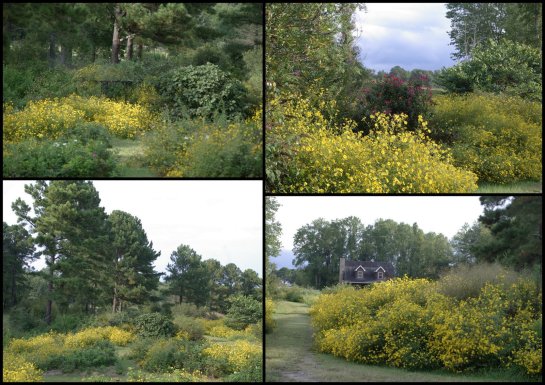
The Sweetbay garden awash with Bidens in September. Alicia uses pink seashore mallows to complement all that yellow.
I was smitten when I saw the Sweetbay Bidens. Tough, floriferous plants ring my bell, and, to go one better, Alicia notes that Bidens is a reliable re-seeder. Too reliable, many gardeners say. Alicia identifies her plants as Bidens aurea, but I found contradictions when I went looking for B. aurea seeds, for which there are surprisingly few sources in the United States. The problem was that B. aurea is described as having a five-petalled flower, occasionally six, but upon scrutiny, the Sweetbay Bidens have eight petals. That got me digging.
Here, then, is a quick overview of the genus, and descriptions of three garden-worthy Bidens species native to the United States – one of which is likely the Sweetbay Bidens.
Bidens is a genus of approximately 280 species in the family Asteraceae, close relatives of Cosmos and Coreopsis. Africa and the Americas are each home to about 100 species, with 65 species restricted to Eastern Polynesia. The remaining species range from Eurasia through the Malay Archipelago, New Guinea, and Australia.
Bidens seed are zoochorous – they are primarily dispersed by animals. In Latin, “bidens” means two teeth, referring to the two (sometimes more), barbs on each achene that readily attach to feathers, fur and clothing. This efficient dispersal trait is responsible for Bidens‘ global range.
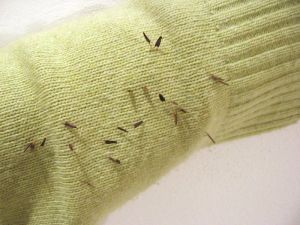
The barbed achenes of Bidens stick to feathers, fur and clothing, dispersing hem easily across the globe. Photo Aelwyn, Wikimedia Commons.
“Single plants produce 3000 to 6000 seeds, many of which germinate readily at maturity, making possible three or four generations per year in some areas. Seeds three to five years old may have 80% germination.” Source: World of Weeds
“Bidens seeds are relished by ducks and are eaten by bobwhites as well. This plant also serves as brooding cover for chicks, which are attracted to the cool, insect-rich environment in which it grows.” – University of Missouri Extension
Bidens are of special value to many species of bees, producing a dark, highly prized honey.
.
– Bidens aurea (formerly B. heterophylla); Arizona Beggatick, Bur Marigold.
Bidens aurea is native to southern North America–Arizona in the U.S.–extending south to Guatemala, though at least 12 species have naturalized in Chile. It is hardy in Zones 5-8, according to the Missouri Botanical Garden.
– Habitat: A spreading, perennial prairie plant, mostly indifferent to soil types, though purported to run in loose soil. Drought-tolerant, generally thriving on rain water. Full sun is the standard recommendation, but with the record heat we’ve had in the U.S. the past two summers, some afternoon shade would probably be beneficial.
– Form: B. aurea reaches three or four feet in height, with a spread of two to three feet. Finely divided leaves similar to Coreopsis. Abundant one- to two-inch flowers are yellow, darker in the center and lighter at the tips of the rays, often fading to cream or white.
As a garden plant, B. aurea is far more popular in the U.K. than in the Americas, where it is commonly regarded as a weed. Hannay’s Lemon Drop, a cultivar released by the now-defunct Hannay’s Nursery in Bath, is a staple in British autumn gardens.
– Propagation: By seed or cuttings, though B. aurea reliably self-seeds in it’s range. Germination takes about 20 days. Cuttings can be taken in late spring and early summer.
How to grow: Bidens aurea; Val Bourne, The Telegraph.
– Bidens aristosa (syn. Bidens polylepis); Bearded Beggarticks, Tickseed Sunflower
– Range: B. aristosa‘s range covers the entire eastern seaboard, excepting Florida, north into Canada, west to Colorado and south into Texas and Mexico. Hardy in Zones 3-9.
– Habitat: According to the Native Plants Journal of the University of Kentucky, “B. aristosa is found in non-forested areas within temperate deciduous forests of North America.” It prefers damp places and low ground, and is often found in roadside ditches and abandoned fields. B. aristosa also colonizes woodland margins, thriving in strong, dappled light and some afternoon shade.
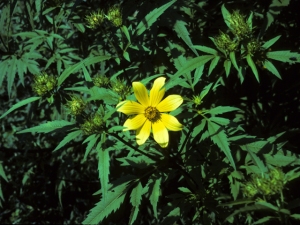
Bidens aristosa, flower and foliage. Photo Wazowski collection, Lady Bird Johnson Wildflower Center.
– Form: B. aristosa grows from three to six feet tall. The pinnate leaves are divided into sharply toothed leaflets and are oppositely placed on the stem. The flowers are two-toned yellow with seven or eight petals, one to two inches in size, produced from mid-summer to early fall.
– Propagation: Like much of it’s clan, B. aristosa is a freely self-seeding annual, occasionally biennial, listed in some places as weedy or invasive (wetlands in particular). The seeds need cold stratification and light to germinate.
Here is the Bidens aristosa profile from the Lady Bird Johnson Wildflower Center.
– Bidens coronata (syn. B. trichosperma); Crowned Beggarticks, Tall Swamp Marigold, Tall Tickseed Sunflower. Listed as a plant of Special Concern in Rhode Island.
– Range: Like B. aristosa, B. coronata is found along the entire eastern seaboard (except for Florida), north into Canada and west to Nebraska. Hardiness accounts vary, generally Zones 4-8.
– Habitat: A water-lover, B. coronata is found in wet meadows, marshes and swamps, hence the common name “Swamp Marigold.” It needs full sun and grows well in most soils, including clay.
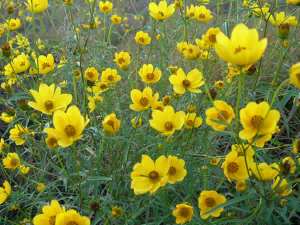
Bidens coronata, foliage and flower. Prairie Moon Nursery has seed.
– Form: B. coronata ranges from two to five feet in height. Two-inch flowers are cadmium yellow in the centers, lightening at the tips of the petals, blooming from August to October. The narrow leaves opposite, pinnate and coarsely toothed.
– Propagation: A re-seeding annual or biennial, B. coronata can also be propagated by cuttings in late spring and early summer. Seeds require cold stratification and light for germination.
– Lady Bird Johnson Wildflower Center
I’m guessing that B. aristosa is the species growing in Sweetbay’s North Carolina garden. Like the Sweetbay Bidens, it has eight petals and similar foliage. B. aristosagrows in the dappled shade of pines in the Sweetbay garden, suiting the species’ range and habitat standards. And, perhaps the clincher, B. aristosa is referenced in a publication titled “Wildflowers on North Carolina Roadsides.” But whatever the species, Bidens is a tough, low-maintenance plant for dramatic fall color, and is attractive to honeybees and all manner of bugs. As soon as I locate a reputable source for seed, B. aristosa will have a home in my garden.
Update: Turns out Alicia knew all along that her plants were Bidens aristosa. Here’s an excerpt from her email: “Just wanted to clarify about the Bidens. I’ve always thought they were Bidens aristosa or polylepis. I think aristosa and polylepis may have been lumped by now, I’m not sure. Anyway the Bidens I have is a terrific native annual for wet places, although it’s quite drought tolerant too.”
Thanks to Alicia for setting the record straight.

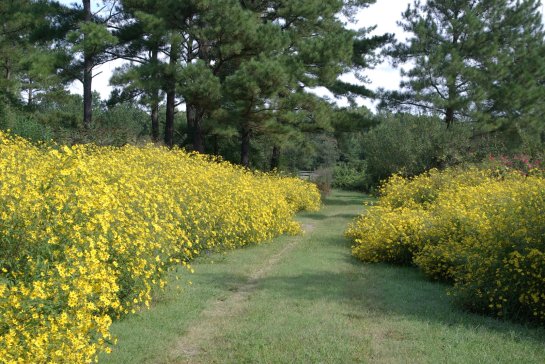
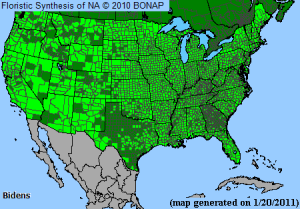
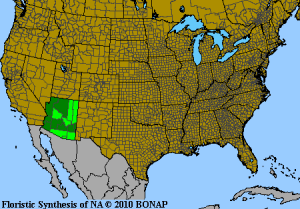
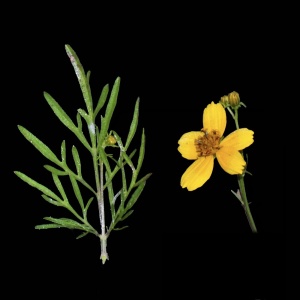
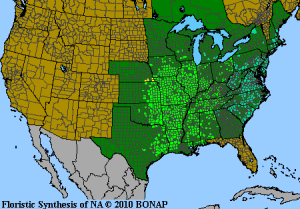
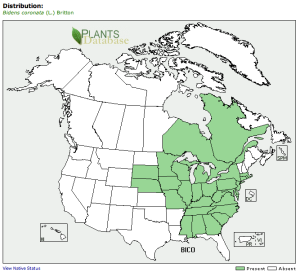
Pingback: JOURNAL September 2017 | My Education of a Gardener